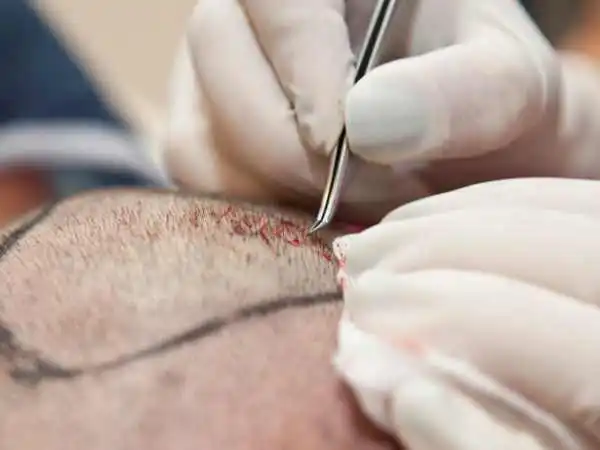Hair loss is a common concern for millions of people worldwide, affecting self-esteem and confidence. Fortunately, advancements in technology have revolutionized the field of hair transplantation, offering more effective, less invasive, and natural-looking solutions. From robotic-assisted procedures to stem cell therapies, the latest innovations are transforming the way hair restoration is approached. This article explores the cutting-edge technologies in hair transplantation and how they are changing the game for those seeking to regain their hair.
The Evolution of Hair Transplantation
Hair transplantation has come a long way since its inception. Early methods, such as punch grafts, often resulted in unnatural-looking hairlines and visible scarring. Over time, techniques like Follicular Unit Transplantation (FUT) and Follicular Unit Extraction (FUE) improved outcomes, but they still had limitations. Today, technological advancements have addressed many of these issues, making hair transplants more precise, efficient, and accessible.
One of the most significant breakthroughs is the use of robotics in hair transplantation. Robotic systems, such as the ARTAS Robotic Hair Transplant system, use artificial intelligence and advanced imaging to identify and extract healthy hair follicles with unparalleled precision. This minimizes human error and ensures a higher success rate. Additionally, robotic systems reduce the risk of scarring and downtime, making the procedure more appealing to patients. However, it’s important to note that even with advanced technology, a hair transplant gone wrong can still occur if the procedure is not performed by a skilled and experienced professional. This highlights the importance of choosing the right clinic and surgeon to achieve the best possible results.
Stem Cell Therapy: A Game-Changer in Hair Restoration
Stem cell therapy is another groundbreaking advancement in hair transplantation. This innovative approach involves harvesting stem cells from the patient’s own body, typically from fat tissue or hair follicles, and injecting them into the scalp. These stem cells stimulate dormant hair follicles, promoting natural hair growth.
Unlike traditional hair transplants, which rely on relocating hair from one part of the scalp to another, stem cell therapy encourages the regeneration of hair in thinning or balding areas. This method is particularly beneficial for individuals with limited donor hair or those seeking a non-surgical option. While still in its early stages, stem cell therapy holds immense promise for the future of hair restoration.
The Role of Platelet-Rich Plasma (PRP) in Hair Transplants
Platelet-Rich Plasma (PRP) therapy has gained popularity as a complementary treatment for hair transplantation. PRP involves drawing a small amount of the patient’s blood, processing it to concentrate the platelets, and injecting it into the scalp. The growth factors in the platelets stimulate hair follicles, promoting thicker and healthier hair growth.
PRP is often used in conjunction with FUE or FUT procedures to enhance results and accelerate healing. It is also a viable option for individuals in the early stages of hair loss who wish to delay or avoid surgery. As research continues, PRP is expected to play an even more significant role in hair restoration.
What Happens When a Hair Transplant Goes Wrong?
While technological advancements have significantly improved the success rates of hair transplants, the procedure is not without risks. A hair transplant gone wrong can lead to unsatisfactory results, such as an unnatural hairline, patchy growth, or visible scarring. In some cases, improper extraction or implantation techniques can damage existing hair follicles, exacerbating hair loss.
Poor outcomes are often the result of choosing an inexperienced surgeon or clinic. It is crucial to research and select a qualified professional with a proven track record. Additionally, patients should have realistic expectations and understand that results may vary based on individual factors like hair type, scalp condition, and overall health.
Fortunately, corrective procedures are available for those who experience a hair transplant gone wrong.
The Future of Hair Transplantation
The future of hair transplantation looks incredibly promising, with ongoing research and development paving the way for even more innovative solutions. One area of interest is 3D-printed hair follicles, which could potentially eliminate the need for donor hair altogether. Scientists are also exploring gene therapy as a way to target the root causes of hair loss, offering a permanent solution for those affected.
Another exciting development is the use of augmented reality (AR) in hair transplant procedures. AR technology allows surgeons to visualize the patient’s scalp in real-time, ensuring precise placement of hair follicles and optimal results. This level of precision was unimaginable just a few years ago, highlighting the rapid pace of technological advancement in this field.
Conclusion
The field of hair transplantation has undergone remarkable transformations, thanks to technological innovations. From robotic systems and stem cell therapy to PRP and beyond, these advancements have made hair restoration more effective, less invasive, and accessible to a broader audience. While the risk of a hair transplant gone wrong still exists, choosing a qualified professional and staying informed about the latest technologies can significantly improve outcomes.
As research continues, the future of hair transplantation holds even greater promise, offering hope to those struggling with hair loss. Whether you’re considering a hair transplant or simply curious about the latest advancements, staying informed is the first step toward making the best decision for your hair restoration journey.

